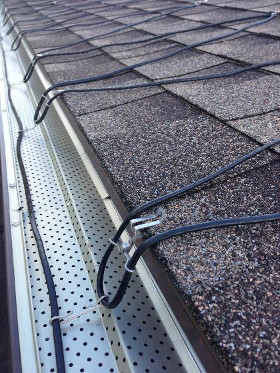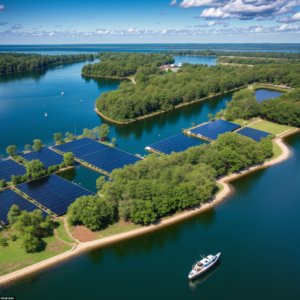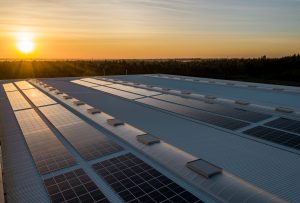The Energy of the Future
The modern way of life poses various challenges and encourages us to adapt to the new conditions of a changing environment. Changes are everywhere, so even the sphere of construction did not remain immune to them. Overcrowding in urban areas has forced builders to adapt to completely new conditions, especially in terms of maximum use of space and existing infrastructure that most cities have long outgrown. Apart from the influence that a changing environment has on us, our influence on that same environment is undeniable. In this context, energy efficiency and ecology are of particular importance.

To meet the demands placed on them, builders are adopting new technologies and are adapting to new needs. Often the best solutions are also the simplest one.In addition, most of the solutions are already around us, it just takes a little creativity in applying existing technologies. Solutions based on these principles are, as a rule, simple, long-lasting and cheap.
On the one hand, heating cables by their construction represent a very simple technical solution based on the basics of electrical engineering, and on the other hand, it is this simplicity and flexibility that give them countless possibilities for application in many spheres of life, mostly in construction. Since 1926, when the Norwegian company Nexans patented the first heating cable, its construction has not changed much in essence to this day.

Unlike the product itself, the possibilities for application and the application itselfe of heating cables have developed much faster and more dynamically. The original purpose of the heating cables was to heat the nursery in order to provide better conditions and yield in the conditions of the Scandinavian climate.
However, soon after that, heating cables find their application in construction. Underfloor heating, melting of snow and ice from paths and access roads, tracks, stairs and terraces, then protection of gutters from freezing, heating of hydrant networks, etc. these are just some of the applications that have been standard for a long time.
Heating cables and underfloor heating networks are very easy to install in any type of floor, regardless of the finish. Thanks to the large floor area that emits heat, there are no elements that overheat, the heat is evenly distributed in the space providing the same feeling of comfort with 2-3 ° C lower air temperature compared to other systems. Therefore, there is no unnecessary overheating of the air and heating of the ceiling, then air flow, raising dust and other microparticles, and as a result we have a lower energy consumption of up to 30%. Underfloor heating, in addition to saving money and energy, also saves your space because it is built into the floor, so you have full freedom to decorate, and you do not have hard-to-reach cleaning places that are very suitable for accumulating dust, mites and other microparticles.
Electric underfloor heating does not require auxiliary rooms, substations, boilers, heat exchangers, wells, etc., heating cables are placed directly in the floor, the only visible element of the system is a thermostat, there are no losses in the process of converting energy from one form to another nor during transport because the heat is generated where it is needed, in the floor of the room. All this makes electric underfloor heating very reliable, simple and cheap to install and without the need for maintenance. The total installed power is far less than with other systems, so the consumption during operation is lower. The use of programmable and Wi-Fi thermostats provides additional comfort and saves energy. Thermostats have a modern design and function and enable simpler control of system operation and consumption.
Melting snow and ice from outside surfaces is no longer a luxury but a matter of necessity. The modern way of construction imposes the need for the greatest possible use of space, especially in urban areas, so access roads, stairs, terraces, etc., require to be protected from snow and ice in order to be functional. Heating cables and heating nets for outdoor use are adapted for all types of surfaces, regardless of the final layer, so they can be installed in asphalt. Thermoregulation equipment and humidity and temperature sensors enable reliable operation of the system with minimal electricity consumption.
UV-resistant heating cables prevent the appearance of ice in the gutters, ensuring their permeability and functionality, thus preventing the possibility of damage to the building. Ice in the gutters can cause damage to the gutters themselves, their fall, damage to nearby property, and even injuries to people.

Also, frozen gutters do not perform their function, so the water that is created by melting snow from the roof due to heating, penetrates into the useful space, causing damage. All this is solved with minimal investment and energy consumption by installing heating cables in gutters and appropriate thermoregulation equipment that ensures reliable operation of the system and its economy.
In some cases, heating cables can be found in various places where for some reason condensation or ice can appear, so this is a very elegant and simple way to prevent it.
Creativity and innovation have introduced heating cables in the industry as well. Preventing freezing or maintaining the temperature in order to ensure viscosity and fluid flow in various technological processes have brought heating cables to pipes, valves, tanks, couplings … and all other hard-to-reach places. Of particular interest for this application are self-regulating heating cables that have the ability to adjust the power in accordance with the ambient temperature and they do that at each point of their body.
In addition to being highly energy efficient, heating systems that are created by using this heating cables do not pollute the environment.
Converting renewable and clean energy sources (nuclear, solar, wind and water energy, biomass, gas, thermal sources …) into electricity has become a trend and the only sustainable way to meet energy needs in the future.
That is why heating systems that basically have heating cables are environmentally friendly because they use electricity for their work and can easily be connected to any source in the future.







